The Bar-winged Prinia (Prinia familiaris) is a captivating avian diversity emblem within the Indonesian archipelago.
Measuring a modest 13 centimeters in length, this small bird species boasts subtle yet striking plumage, characterized by olive-brown upperparts and distinctive dark bars adorning its wings.
Its slender bill is finely tuned for capturing small insects, its primary source of nourishment. Adaptability defines its lifestyle, as it effortlessly navigates diverse habitats, from lush mangrove forests to human-altered landscapes like gardens and plantations.
Renowned for its musical calls, the Bar-winged Prinia’s whistles, trills, and chatters echo through the dense foliage, marking territories and courtship displays.
While currently categorized as “Least Concern” by conservation authorities, ongoing vigilance is crucial to ensure the continued presence of this enchanting bird amidst evolving environmental challenges.
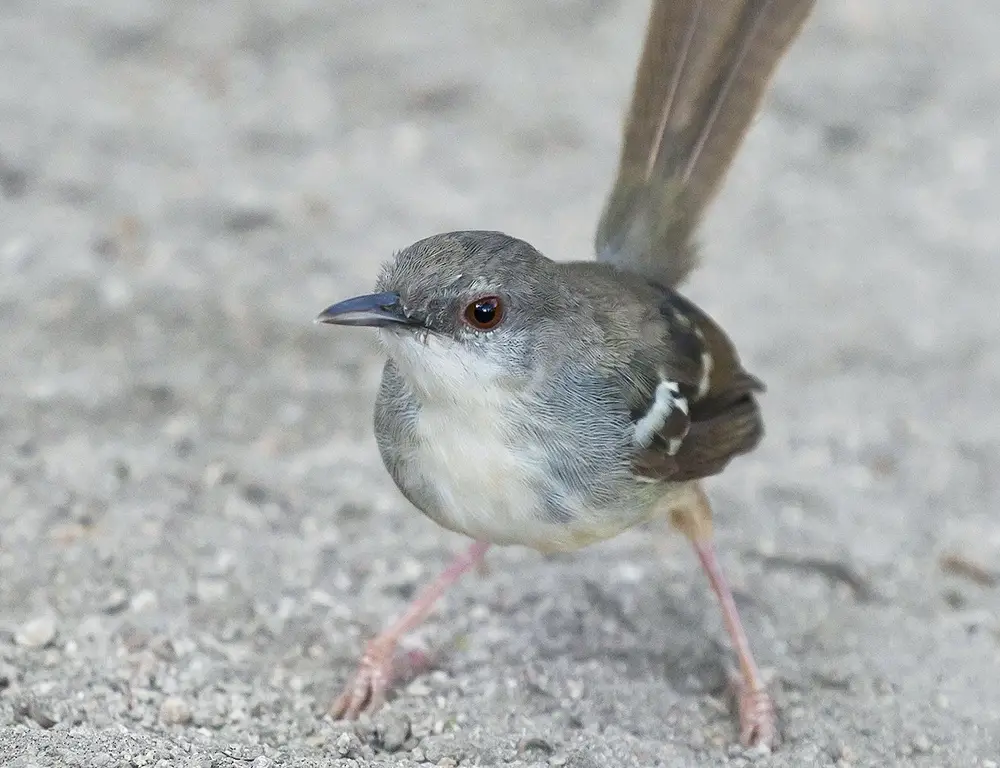
Physical Characteristics of the Bar-Winged Prinia
The Bar-winged Prinia (Prinia familiaris) is a small passerine bird with distinctive physical characteristics that aid in its survival and adaptation to its environment.
Here’s a closer look at its physical attributes:
Size
The Bar-winged Prinia is a small bird, measuring approximately 13 centimeters (5.1 inches) in length from beak to tail. This modest size places it among the smaller bird species within its range.
Weight
On average, Bar-winged Prinias weigh between 8 to 10 grams (0.28 to 0.35 ounces). This lightweight build allows for agile movements and efficient flight, essential for their foraging and navigation through diverse habitats.
Plumage
A combination of olive-brown upperparts and lighter underparts characterizes its plumage. One of its most prominent features is the distinct barring on its wings, which gives the bird its name. These bars are often darker, contrasting with the rest of the plumage.
Head
The head of the Bar-winged Prinia is relatively tiny, with a short, pointed bill well-adapted for capturing small insects, its primary food source. The eyes are typically dark and positioned on either side of the head, providing excellent peripheral vision.
Tail
The tail is moderately long and often held upright while perched. It may be used for balance during flight and agile maneuvering through dense vegetation.
Legs and Feet
The legs of the Bar-winged Prinia are short but sturdy, allowing for quick movements on the ground and agile hopping between branches. The feet are equipped with sharp claws, aiding in perching and gripping various surfaces.
Sexual Dimorphism
Male and female Bar-winged Prinias generally exhibit similar plumage, with minimal differences in appearance between the sexes. However, subtle variations in coloration or markings may exist, potentially aiding in mate selection and identification during the breeding season.
Habitat and Distribution of the Bar-Winged Prinia
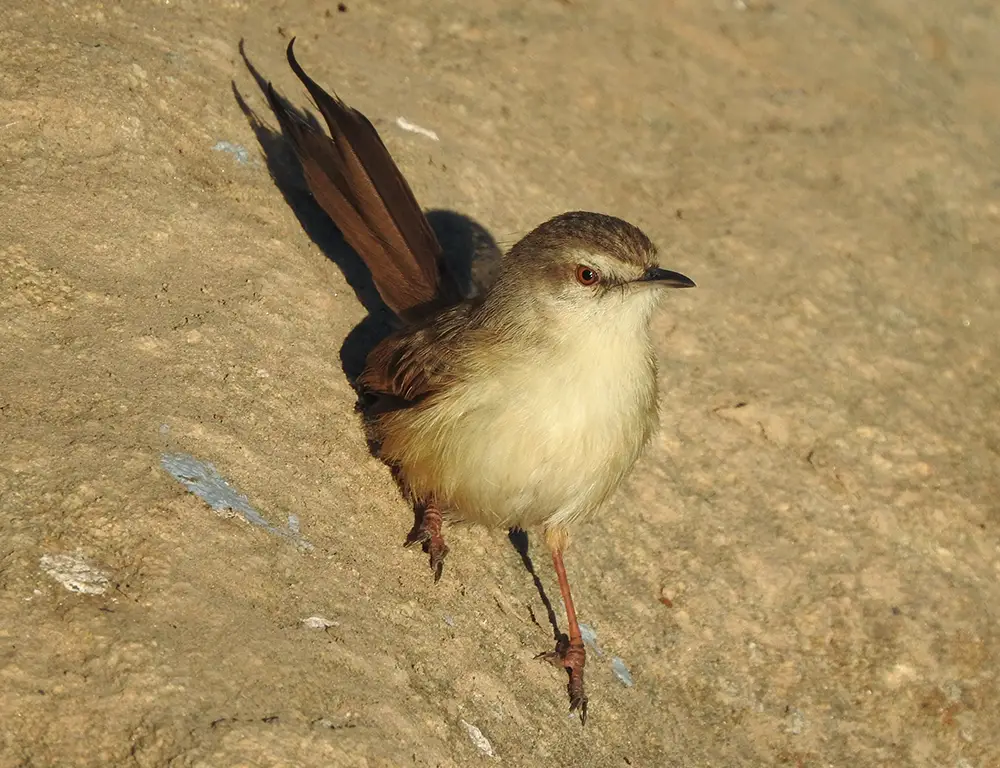
The Bar-winged Prinia (Prinia familiaris) is primarily found in the Indonesian archipelago, with its distribution centered around specific islands within this region.
Here’s an overview of its habitat and distribution:
Range
The Bar-winged Prinia is endemic to Indonesia, meaning it is found exclusively within its borders. Its range includes several islands, with populations recorded in Sumatra, Java, and Bali.
Habitat
This species exhibits remarkable adaptability to various habitats within its range. It can be found in diverse environments, including:
- Mangrove Forests: Bar-winged Prinias inhabit mangrove forests along coastal areas. These dense and saline environments provide ample opportunities for foraging and nesting.
- Montane Forests: In higher elevations, such as those found on the slopes of mountains, Bar-winged Prinias may be found in montane forests. These habitats offer different food sources and nesting sites compared to lowland areas.
- Human-Altered Environments: Bar-winged Prinias are adaptable birds and can thrive in human-altered landscapes such as gardens, parks, agricultural areas, and plantations. They may take advantage of the resources provided in these environments, including abundant insects and suitable nesting sites.
Microhabitat Preferences
Within these broader habitat types, Bar-winged Prinias often favor areas with dense vegetation for nesting and foraging.
They are commonly found in thickets, shrubby areas, and edges of wooded habitats, where they can easily conceal themselves while foraging for insects or building their nests.
Altitudinal Range
While primarily found in lowland and mid-altitude regions, Bar-winged Prinias have been recorded at elevations up to approximately 2,000 meters (6,600 feet) above sea level in montane areas.
Diet and Feeding Behavior of the Bar-Winged Prinia
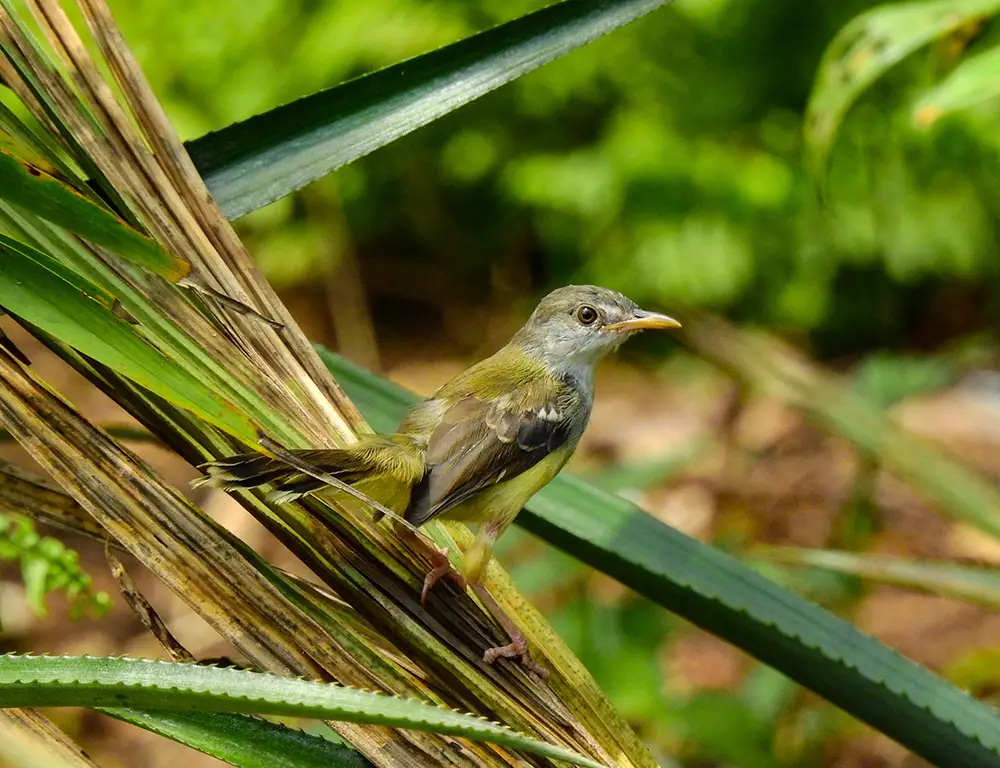
The Bar-winged Prinia (Prinia familiaris) is an insectivorous bird whose diet primarily consists of small insects and invertebrates.
Here’s a closer look at its diet and feeding behavior:
Insectivorous Diet
The Bar-winged Prinia feeds predominantly on a wide array of small insects, including beetles, ants, termites, grasshoppers, caterpillars, and spiders. When available, it may also consume other invertebrates, such as snails and small worms.
Foraging Techniques
This bird employs various foraging techniques to capture its prey. Common methods include:
- Gleaning: Inspecting foliage, branches, and vegetation for stationary or slow-moving insects, which it then picks off with its bill.
- Probing: Inserting its slender bill into cracks, crevices, or leaf litter to extract hidden insects or larvae.
- Hawking: Catching flying insects mid-air by making quick aerial sallies from perches.
Habitat Preferences
Bar-winged Prinias are adaptable birds that inhabit diverse habitats, and their foraging behavior reflects this flexibility.
They can be found in various environments, including mangrove forests, montane forests, grasslands, scrublands, and human-altered landscapes such as gardens and agricultural areas.
Their ability to exploit different habitats allows them to access a wide range of insect prey.
Social Foraging
While Bar-winged Prinias are often seen foraging alone or in pairs, they may also engage in social foraging behavior, particularly outside the breeding season.
In these instances, they may form loose flocks with other individuals, potentially benefiting from increased foraging efficiency and predator detection within the group.
Seasonal Variation
The availability of insect prey may vary seasonally, influencing the Bar-winged Prinia’s foraging patterns.
During the rainy season, when insect populations may be more abundant, these birds may have access to a greater diversity and quantity of prey compared to drier periods.
Dietary Supplements
While insects form the primary component of the Bar-winged Prinia’s diet, it may also supplement its nutrition with other food items when necessary. This may include small seeds, berries, or plant matter, although these are consumed infrequently compared to insects.
Reproduction and Life Cycle of the Bar-Winged Prinia
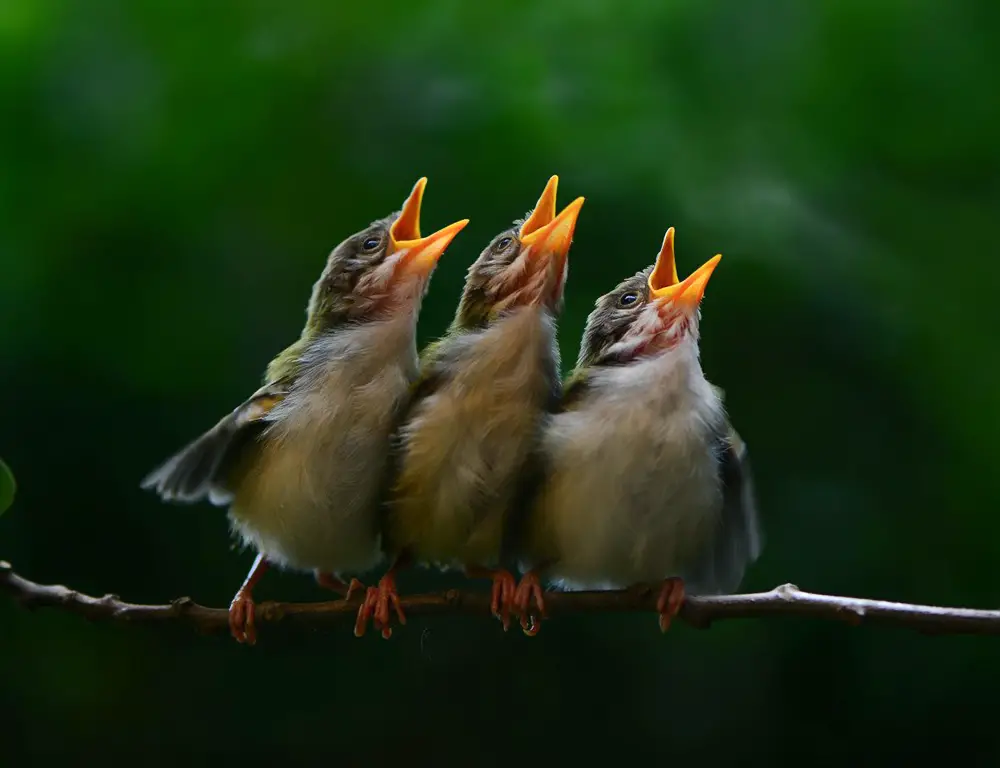
The reproduction and life cycle of the Bar-winged Prinia (Prinia familiaris) are fascinating aspects of its biology, showcasing its breeding behaviors and strategies for ensuring the survival of its offspring.
Here’s an overview of the reproduction and life cycle of this tiny bird species:
Breeding Season
The Bar-winged Prinia typically breeds during the rainy season, which varies depending on its location within the Indonesian archipelago. Breeding activities may commence in response to environmental cues such as increased rainfall and food availability.
Courtship and Pair Bonding
Before breeding, male Bar-winged Prinias engage in courtship displays to attract mates. These displays often involve vocalizations, aerial flights, and visual cues such as wing-fluttering or tail-spreading.
Once pair bonds are established, males and females may engage in mutual preening and nest-building activities.
Nest Construction
Bar-winged Prinias construct intricate dome-shaped nests using grasses, plant fibers, and other available materials. Nests are often positioned within dense vegetation, such as shrubs or bushes, to conceal and protect from predators.
Both male and female birds participate in nest-building, with the female primarily responsible for lining the nest interior with softer materials.
Egg Laying and Incubation
After the nest is completed, the female lays a clutch of eggs, typically ranging from 2 to 4 eggs per clutch. The eggs are usually incubated solely by the female, although the male may assist with incubation duties intermittently.
The incubation period lasts approximately 12 to 14 days, during which the parents diligently maintain the nest and regulate the temperature of the eggs.
Hatching and Nestling Stage
Upon hatching, the hatchlings are altricial, meaning they are born relatively undeveloped and dependent on parental care. Both parents contribute to feeding and brooding the nestlings, regurgitating small insects and other food items to nourish their offspring.
The nestlings increase during this stage, gradually replacing their downy feathers with juvenile plumage.
Fledging and Independence
After approximately 9 to 12 days, the nestlings reach the fledgling stage, where they develop the ability to leave the nest and explore their surroundings. Initially, the fledglings may remain close to the nest, relying on their parents for food and guidance.
Over time, they gain independence and begin to forage independently, gradually transitioning to adulthood.
Juvenile Dispersal and Maturity
Once the juveniles have acquired the necessary skills for survival, they disperse from the natural territory in search of suitable habitats. They undergo molting and maturation, eventually attaining adult plumage and reproductive maturity.
The exact timing of maturity varies among individuals but typically occurs within several months to a year after fledging.
Conservation Status of the Bar-Winged Prinia
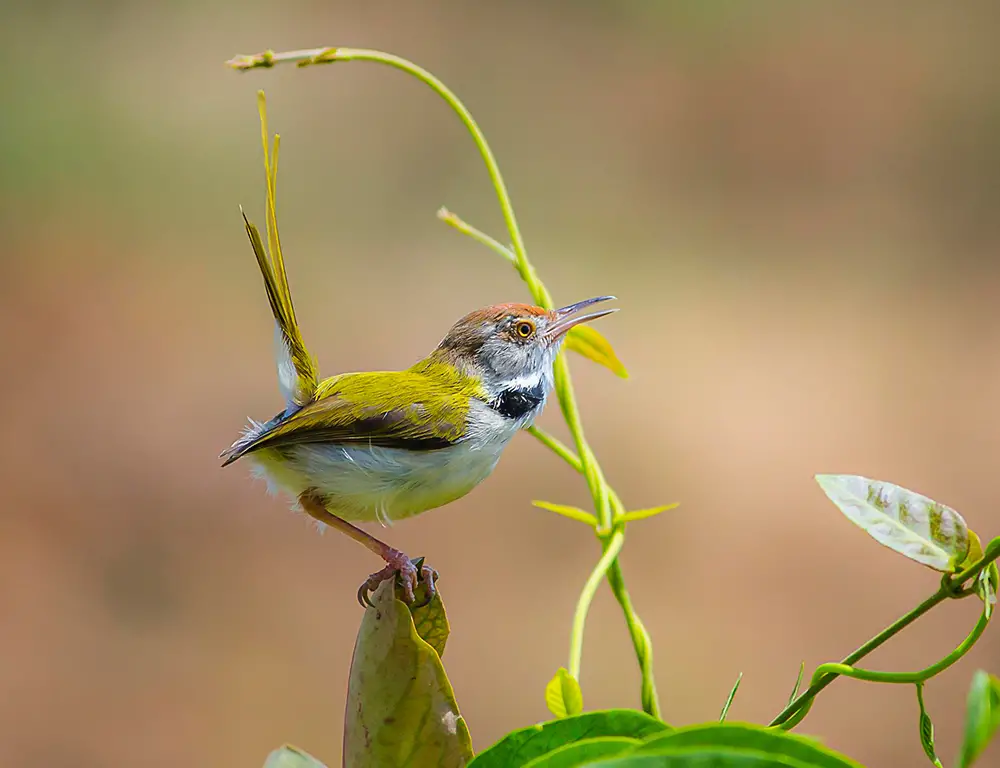
The conservation status of the Bar-winged Prinia (Prinia familiaris) is currently classified as “Least Concern” by the International Union for Conservation of Nature (IUCN). However, this designation does not imply that the species is completely out of danger.
Rather, it indicates that the population is currently considered stable, but potential threats could impact its future.
Here are some key points regarding the conservation status of the Bar-winged Prinia:
Habitat Threats
The Bar-winged Prinia primarily inhabits subtropical or tropical moist lowland and mangrove forests. However, habitat degradation due to deforestation, pollution, and human encroachment poses significant threats to their survival.
Despite their adaptability, loss of suitable habitat can lead to population declines and fragmentation.
Population Estimates
Population estimates for the Bar-winged Prinia are relatively broad, with data indicating a range of 1 million to 10 million individuals as of 2016. However, more recent data is not readily available, making it challenging to assess changes in population trends over time.
Limited Protection
Despite being widespread across Southeast Asia, Bar-winged Prinias are notably absent from many protected areas. This lack of representation in conservation areas could leave them more vulnerable to habitat loss and other threats.
Vulnerability to Climate Change
The Bar-winged Prinia’s preference for specific types of vegetation makes it vulnerable to changes brought about by climate change. Alterations in temperature, rainfall patterns, and habitat composition could impact their distribution and abundance in the future.
Research and Monitoring
Regular monitoring and research are essential for understanding the population dynamics, habitat requirements, and threats the Bar-winged Prinia faces.
More comprehensive and up-to-date data are needed to assess their conservation status accurately and implement effective conservation strategies.
To Recap
In delving into the world of the Bar-winged Prinia, we’ve uncovered a species that epitomizes resilience and adaptation.
From its distinct wing bars to its diverse habitats and melodious calls, every aspect of its existence speaks to its remarkable survival strategies.
Yet, despite its ability to thrive in varied environments, it faces ongoing threats from habitat loss and climate change. As we conclude our journey with this captivating bird, it’s clear that safeguarding its habitat is paramount.
We can take meaningful steps toward conservation by embracing a deeper understanding of the Bar-winged Prinia and its challenges.
Let us remain vigilant in our efforts to protect these avian wonders, ensuring that their enchanting presence continues to grace the landscapes of the Indonesian archipelago for generations to come.